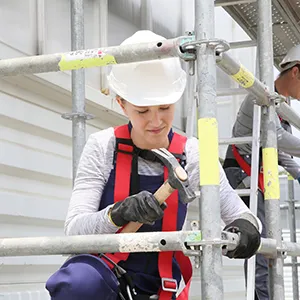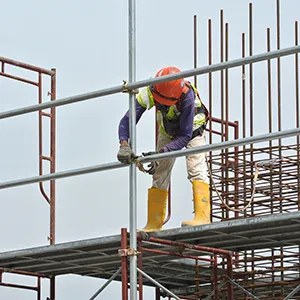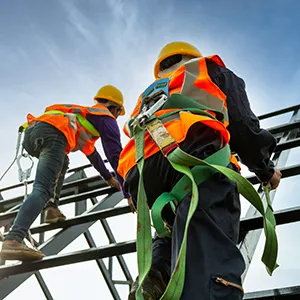Scaffolding is essential for many construction projects, but it also presents serious safety risks when not properly erected, maintained, or used. According to OSHA, scaffold-related incidents consistently rank among the most frequently cited violations in the construction industry1. These incidents often result in severe injuries or fatalities, most of which are preventable through proper compliance with OSHA standards and effective training.

OSHA Scaffold Requirements
OSHA’s Scaffold Standard, outlined in 29 CFR 1926 Subpart L, provides detailed requirements to ensure scaffold safety. Key provisions include:
- Load Capacity: Scaffolds must support their own weight and at least four times the maximum intended load without failure2.
- Guardrails and Toe Boards: These are required on scaffolds more than 10 feet above a lower level to prevent falls and falling objects2.
- Safe Access: Ladders, stair towers, ramps, or walkways must be provided for safe access to scaffold platforms2.
- Inspections: A competent person must inspect scaffolds before each work shift and after any event that could affect structural integrity2.

The Scope of the Problem
1. Scaffold Violations Are Among OSHA’s Top 10
In fiscal year 2024, OSHA cited scaffolding (29 CFR 1926.451) as the eighth most frequently violated standard1. These violations often involve improper construction, lack of fall protection, and failure to provide safe access.
2. Fatalities and Injuries from Scaffold Falls
According to the Bureau of Labor Statistics, 52 workers died from falls involving scaffolds in 2020 alone3. Additionally, falls, slips, and trips accounted for 35.3% of all construction-related fatalities that year4. Many of these incidents could have been prevented with proper scaffold setup and training.
The Role of Training
Training is a critical component of scaffold safety. The CDC’s National Institute for Occupational Safety and Health (NIOSH) emphasizes that lack of training is a major contributor to scaffold-related falls5.
Workers must be trained to:
- Recognize scaffold hazards
- Use fall protection systems correctly
- Inspect scaffolds before use
- Understand load limits and platform requirements
Training must be provided in a language and format that workers understand, especially in diverse construction environments.

Best Practices for Employers
To reduce scaffold-related incidents, employers should:
- Ensure all scaffolds are designed and erected under the supervision of a qualified person
- Conduct daily inspections by a competent person
- Provide fall protection and enforce its use
- Offer regular, multilingual training sessions
- Maintain clear access routes to and from scaffolds
Recommended OSHA Training Course(s):
Visit https://gbts.learnshare.com to view a full list of courses including the online OSHA 30-Hour construction course in both English and Spanish.
OSHA Outreach courses are provided in partnership with UL PureSafety, an OSHA-authorized online outreach provider. Meets OSHA and NYC Department of Buildings guidelines when actively proctored.
Contact Gallagher Bassett Technical Services at GBTSNYCinfo@gbtpa.com with any questions.
Sources
- Occupational Safety and Health Administration. (2024). Top 10 Most Frequently Cited Standards. https://www.osha.gov/top10citedstandards/
- Occupational Safety and Health Administration. (n.d.). 1926.451 – General Requirements. https://www.osha.gov/laws-regs/regulations/standardnumber/1926/1926.451
- Occupational Safety and Health Administration. (n.d.). Scaffolding – Overview. https://www.osha.gov/scaffolding
- Bureau of Labor Statistics. (2022). Workplace Injuries and Job Requirements for Construction Laborers. https://www.bls.gov/spotlight/2022/workplace-injuries-and-job-requirements-for-construction-laborers/
- 5: Centers for Disease Control and Prevention. (2019). Prevent Construction Falls from Roofs, Ladders, and Scaffolds. https://www.cdc.gov/niosh/docs/2019-128/pdfs/2019-128Revised112019.pdf
